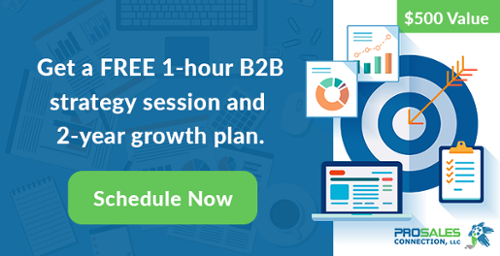The majority of marketers (72% to be exact) believe content creation is the most effective SEO tactic you can use today. This is one of the driving factors causing the demand for quality content to continue to climb.
Over and over again, quality content has proven to generate the most social shares and organic search traffic. It’s also considered the foundation needed to establish yourself or your business as a thought leader in the industry.
However, to capitalize on all that content has to offer, you have to create and implement an effective B2B content marketing strategy. Keep reading to learn not only why this is important, but also how to create a strategy that helps you achieve your marketing goals and continue to grow your business.
What is B2B Content Marketing?
Just as the name implies, B2B content marketing is the process of using content to grow your business’s audience while strengthening and developing your brand affinity. When done consistently with quality content, the efforts will drive leads and sales because what you offer is appealing to other businesses.
There is a specific element that helps to set B2B content marketing apart from all other marketing efforts. This element is that the content you create is used only by businesses, and only for businesses. This isn’t your typical consumer-facing content.
B2B vs. B2C Content Marketing
More important than anything else, B2B content must be useful. If your readers aren’t able to apply the actionable elements of the content to their own business or work, then it missed the mark.
Don’t worry, you can still publish an occasional off-topic think piece, but if you are creating B2B content, being seen as a top resource for other professionals in the industry needs to be your number one priority.
This doesn’t mean that B2C content shouldn’t be useful, too. However, this is not the main consideration in this case.
The Importance of Having a B2B Content Marketing Strategy
While this may be restating the obvious, there’s no question –content marketing is huge. In fact, up to 92% of all marketers state their organization views content as a critical business asset.
While this is true, among B2B companies, very few view their content marketing efforts as being effective. Many believe this is because there aren't many companies that have an established B2B marketing strategy in place for content creation and use.
Your Comprehensive Guide to Create a B2B Content Marketing Strategy
Once you understand what B2B content is and why having a predetermined strategy is so important, you need to learn to leverage the power of this marketing channel. By the time you get through the information here, you will be ready to create a B2B content marketing strategy that is effective and profitable. There are several things to consider, so let’s get started.
Who is Your Target Audience?
How will you give your audience what they want if you don’t know what this is? You must know as much about your audience as possible.
Even though you may use segmentation to divide your audience, each segment is made up of individual people. This is the main reason reader personas (very similar to buyer personas) are important.
If you are like some businesses, you may believe your audience is too vast to define in this manner. To some extent, this may be the case. It’s only possible to get so granular before you have to opt for broader descriptions of who is reading what you post.
However, if you use Google Analytics data, you can get much more specific about your audience. With the data provided, you can learn about the people who visit your site and see basic demographic information.
This also takes us into our next point.
What is the Intent of Your Readers/Customers?
In addition to figuring out who your audience is, you also need to know their intent. Each search query has some type of intent behind it. Do you know what their intent is, or how to figure out what it is?
There are three basic types of intent you may encounter:
Navigational
Here, the intent behind the search is to reach a specific site. For example, “Facebook,” “Capital One log in,” or “pentagon website.”
Informational
With this intent, someone is searching for information. They assume it is going to be found on one or more web pages. Some examples include, “Bluetooth speaker reviews,” “Virginia home prices,” or “signs of diabetes.”
Transactional
In this situation, the intent is to begin a web-mediated process. Examples include, “subscribe to the Wall Street Journal,” “purchase equipment online,” or “get auto insurance quotes.”
The research you do may help you figure out what the most popular articles are on a specific topic that your audience cares about; however, that doesn’t tell you the “why” of why it is popular.
The question you have to answer is why are they searching for it to begin with? What is it about that specific topic in relation to their business and needs that makes it of interest?
Don’t just track what is being searched for. You also need to know why it is relevant.
Make sure you do this without assuming you know what they are looking for. The best way to do this is by simply asking.
Some of the questions you can ask to find out what your customers are looking for include:
- The amount of time spent consuming content
- Who the customer trusts
- How they consume content
- How they share content
Research like this will help you develop and maintain the right brand voice for your content strategy. This will also help you figure out how to provide your audience with content to keep them engaged.
Research and Define the Goals You Have
Before you begin to create content or flesh out the bullet points of your content marketing strategy, you have to understand why you are doing it.
What is the ultimate goal you have? Take some time to define your content marketing goals.
The top goal of any content marketing is to influence your audience’s behavior. Content is not just for consumption. It should be designed for action and have a specific intent.
You need your readers to take a specific action after they have read it. You also want them to take away value from your content.
Keep in mind, not all content will be a call to action. While this is true, everything you create needs to be tied to a call to action.
If you don’t have goals, you can’t have a strategy – it’s just not possible.
When setting your content marketing goals, don’t do this blindly. You need to set goals that align with your overall business goals, along with the steps you want your customers to take in your sales funnel.
Some of the most common content marketing goals that are worth looking into include:
- Improving loyalty
- Reducing churn
- Improving organic search ranking
- Building rapport and trust
- Overcoming objections
- Attracting new potential leads
- Illustrating benefits
- Attracting strategic partners
The goals you have will help you research and define the goals that are most relevant to your buyer’s journey. It will also help you map out your customer interactions to get them to this point.
The Developing of New Content Ideas
One of the main challenges for content marketers is coming up with new content ideas. Even if you know who your audience is and what they are looking for, at some point, you may struggle to determine what to write or produce content about.
When you are first starting out, it’s easy to come up with new things to write about.
A good way to find new topics is to see what people are talking about and sharing on social media. There are more than a few tools that can help you with this, with quite a few of them found here.
With the right tool, you can examine real-time data from all the serious social networks to figure out what industry topics are popular and gaining traction. With this information, you can prepare content with a new angle on a current topic or create a counterpoint to a popular opinion.
Relationship Building and Lead Nurturing is Essential
As you build on research to refine your overall content strategy, you need to pay attention to how you will nurture leads. The goal is to build relationships with potential customers, as this is a crucial part of B2B lead generation.
Make sure you aren’t putting excessive effort into acquisition when creating content. Only about 27% of B2B leads are going to be sales-read when they initially discover your content. However, most companies don’t have a strategy for lead nurturing.
When researching, you need to include the most effective content types for lead nurturing. You also need to analyze where a specific content type or topic will fit into your sales funnel. Not all content is created equal. Some potential customers may want to see videos while others might prefer written posts. Some may prefer content in more narrative form while others want to see quick "How to" content with bullet points.
Research the Latest Trends to Know What to Do Next
The research you do should help you quickly figure out what is effective in your industry and what your audience will respond to. However, you shouldn’t stop there. Be sure you look to the future too, to see what is coming.
While everyone in the industry may create blogs and articles, if you have the right strategy in place, you can generate quite a bit of organic traffic.
While this is true, things are always changing and evolving.
With new content networks, updates to social platforms, and changes in the way people consume content, you have to have a forward-thinking mindset. It’s never a good idea to base your strategy just on what has happened in the past.
Part of your ongoing content research needs to be on the latest trends in the industry. You can’t be afraid to embrace new trends or to experiment with all-new content ideas. This is the best way to figure out what really works.
Promoting Your B2B Content is Key
In today’s online environment, content promotion is crucial. Competition in this "attention economy” is pretty aggressive. If you rely only on organic reach alone, you are making a huge mistake.
You need to make sure your content reaches as many of your target audience as possible. There are several ways to do this. Some of the most effective include social media and guest posting on other sites.
One of the main benefits offered by content marketing is the “flywheel effect.” This is when you promote your content through social media or other avenues, which results in more leads and followers on these platforms, a larger audience, and more social shares. All this is beneficial to your brand and business in the long run.
Are You Ready to Build Your B2B Content Marketing Strategy?
As you can see, there are more than a few things that go into the creation of a successful B2B content marketing strategy. However, by using the guide and information here, you are on your way to getting more leads and more results for your efforts than ever before.
If you are ready to create your own content marketing strategy for your B2B business, our team is here to help. We have a team of pros who can evaluate your company and your goals to help you create content that encourages customers to act. Contact us today to get started.
If you want your content to be successful, you have to have a strategy. Not only do you need a strategy, but you also need to ensure it is effective. Don’t worry, you don’t have to figure this all out on your own, as we are here to help each step of the way.
Leave a comment or question below and we will be happy to respond!








